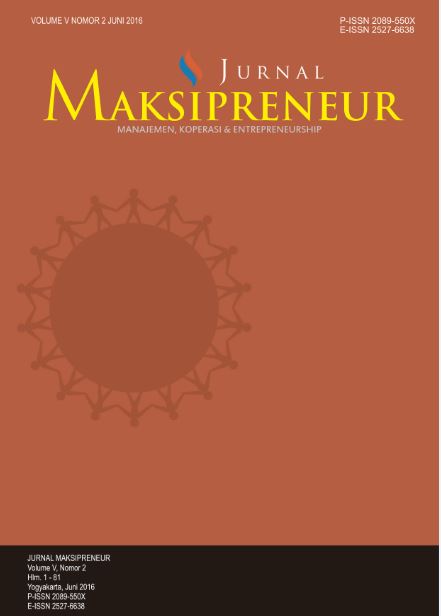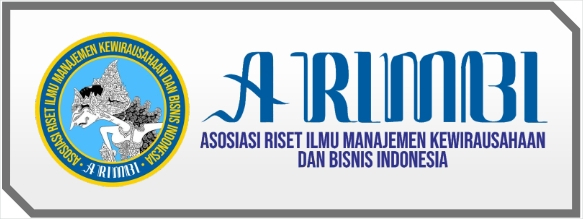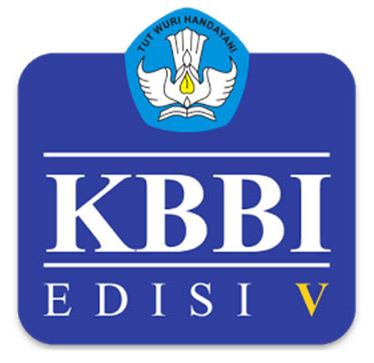Peran Citra Merek, Nilai Pelanggan, dan Kualitas Persepsian terhadap Kepuasan Pelanggan: Sebuah Studi Kasus
DOI:
https://doi.org/10.30588/jmp.v5i2.159Keywords:
customer satisfaction, brand image, customer value, perceived qualityAbstract
Customer satisfaction is a key to the success of the company. Customer satisfaction has a positive relationship with the company's value for shareholders. By providing satisfaction to the customers, companies can gain greater market share and increase its profits. Some of the critical success factors in creating satisfaction for its customers include brand image, customer value, and perceived quality. This research revealed a significant role of brand image, customer value, and perceived qualityto customer satisfaction of Smartfren data service in Sleman, Yogyakarta.
References
Aaker, D. A., Kumar, A., & Day, G. S. (1998). Marketing Research (Sixth). New York: John Wiley & Sons, Inc.
Andaleeb, S. S. (1998). Determinants of Customer Satisfaction with Hospitals: A Managerial Model. International Journal of Health Care Quality Assurance, 11(6), 181–187.
Azwar, S. (2008). Reliabilitas dan Validitas (Edisi Ketiga). Yogyakarta: Pustaka Pelajar.
Garver, M. S., & Cook, R. L. (2001). Best Practice Customer Value and Satisfaction Cultures. Mid-American Journal of Business, 16(1), 11–22.
Gujarati, D. (1999). Ekonometrika Dasar. Jakarta: Erlangga.
Heard, E. (1993). Wallring the Talk of Customer Value. National Productivity Review, 21–27.
Jamal, A., & Naser, K. (2003). Factors Influencing Customer Satisfaction in the Retail Banking Sector in Pakistan.IJCM, 13(2), 29–53.
Joung, H.-W., Choi, E.-K., & Wang, E. (2016). Effects of Perceived Quality and Perceived Value of Campus Foodservice on Customer Satisfaction: Moderating Role of Gender. Journal of Quality Assurance in Hospitality & Tourism, 1–13. http://doi.org/10.1080/1528008X.2015.1042620.
Kotler, P. (2004). Marketing Management: Analysis, Planning, Implementation, and Control (Ninth). New Jersey: Prentice-Hall, Inc.
Kotler, P., & Keller, K. L. (2016). Marketing Management (Fifteenth). Boston: Pearson Education, Ltd.
Matzler, K., Hinterhuber, H. H., Daxer, C., & Huber, M. (2005). The relationship between customer satisfaction and shareholder value. Total Quality Management, 16(5), 671–680. http://doi.org/10.1080=14783360500077 674.
McDonald, M. (1997). The Role of Marketing in Creating Customer Value. Engineering Science and Eucation Journal.
Musanto, T. (2004). Faktor-Faktor Kepuasan Pelanggan dan Loyalitas Pelanggan: Studi Kasus pada CV. Sarana Media Advertising Surabaya. Jurnal Manajemen & Kewirausahaan, 6(2).
Rangkuti, F. (2002). Measuring Customer Satisfaction, Teknik Mungukur dan Strategi Meningkatkan Kepuasan Pelanggan. Jakarta: PT Gramedia Pustaka Utama.
Ranto, D. W. P. (2007). Pengaruh Citra Merek, Nilai, Kualitas Persepsian dan Kepuasan Pelanggan terhadap Loyalitas Pelanggan (Studi Empirik pada Pelanggan Pasta Gigi Pepsodent di Yogyakarta. Jurnal Utilitas, 15(2).
Risdwiyanto, A. (1999). Pengembangan Kemampuan Marketers dalam Perubahan Peran Pemasaran dan Lingkungan Bisnis Global.
Risdwiyanto, A. & Swastha, B. (2001). Pengembangan Konsep Jasa Pendidikan Tinggi Berbasis Keinginan Konsumen Potensial. Jurnal Ekonomi & Bisnis Indonesia, Vol 16, No. 4, (Oktober).
Sheridan, J. H. (1994). What do You Really Know About... Customer Satisfaction? Industry Week.
Smith, A. K., Bolton, R. N., & Wagner, J. (1999). A Model of Customer Satisfaction with Service Encounters Involving Failure and Recovery. Journal of Marketing Research, 36(3), 356–372.
Sugiyono. (2008). Statistik untuk Penelitian Bisnis. Bandung: Alpa Beta.
Swaddling, D. C., & Charles, M. (2005). Don’t Measure Customer Satisfaction. Quality Progress, 62–67.
Tam, J. L. M. (2000). The Effects of Service Quality, Perceived Value and Customer Satisfaction on Behavioral Intentions.Journal of Hospitality & Leisure Marketing, 6(4), 31–43.
Tjiptono, F. (2005). Manajemen Jasa. Yogyakarta: Andi Offset.
Downloads
Published
How to Cite
Issue
Section
License
Authors who publish with Jurnal Maksipreneur agree to the following terms:
Authors retain copyright and grant the Jurnal Maksipreneur right of first publication with the work simultaneously licensed under a Creative Commons Attribution 4.0 International License that allows others to share (copy and redistribute the material in any medium or format) and adapt (remix, transform, and build upon the material) the work for any purpose, even commercially with an acknowledgment of the work's authorship and initial publication in Jurnal Maksipreneur.
Authors are able to enter into separate, additional contractual arrangements for the non-exclusive distribution of the journal's published version of the work (e.g., post it to an institutional repository or publish it in a book), with an acknowledgment of its initial publication in Jurnal Maksipreneur. Authors are permitted and encouraged to post their work online (e.g., in institutional repositories or on their website) prior to and during the submission process, as it can lead to productive exchanges, as well as earlier and greater citation of published work (See The Effect of Open Access).























